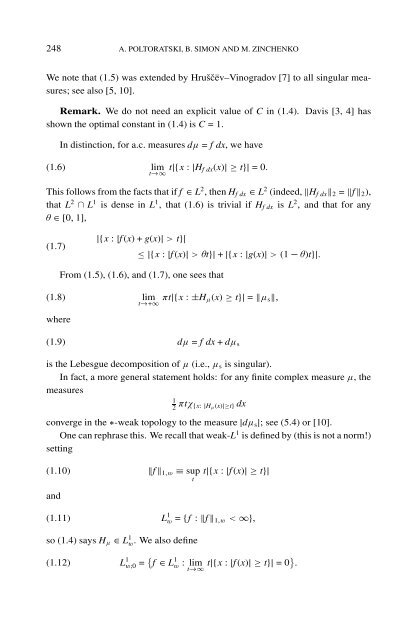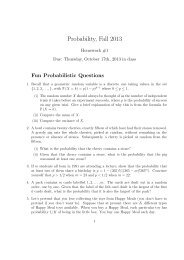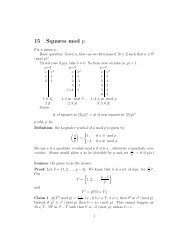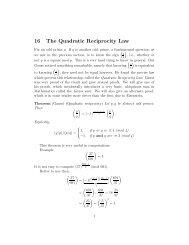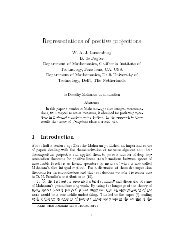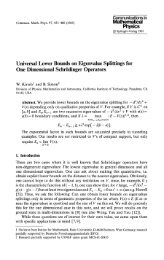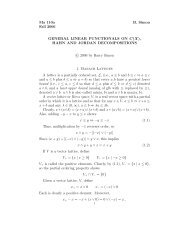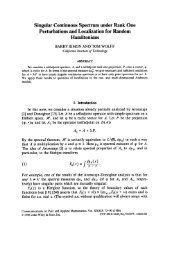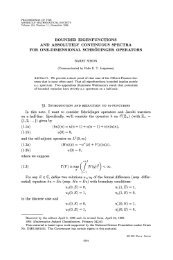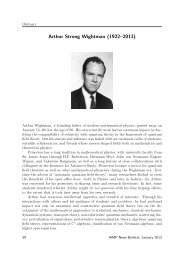1 Introduction - Mathematics Department - Caltech
1 Introduction - Mathematics Department - Caltech
1 Introduction - Mathematics Department - Caltech
Create successful ePaper yourself
Turn your PDF publications into a flip-book with our unique Google optimized e-Paper software.
248 A. POLTORATSKI, B. SIMON AND M. ZINCHENKO<br />
We note that (1.5) was extended by Hruˇsčëv–Vinogradov [7] to all singular measures;<br />
see also [5, 10].<br />
Remark. We do not need an explicit value of C in (1.4). Davis [3, 4] has<br />
shown the optimal constant in (1.4) is C = 1.<br />
In distinction, for a.c. measures dµ = f dx, we have<br />
(1.6) lim<br />
t→∞ t|{x : |Hf dx(x)| ≥ t}| = 0.<br />
This follows from the facts that if f ∈ L 2 , then Hf dx ∈ L 2 (indeed, Hf dx2 = f2),<br />
that L 2 ∩ L 1 is dense in L 1 , that (1.6) is trivial if Hf dx is L 2 , and that for any<br />
θ ∈ [0, 1],<br />
(1.7)<br />
|{x : |f (x) + g(x)| > t}|<br />
≤ |{x : |f (x)| > θt}| + |{x : |g(x)| > (1 − θ)t}|.<br />
From (1.5), (1.6), and (1.7), one sees that<br />
(1.8) lim<br />
t→+∞ πt|{x : ±Hµ(x) ≥ t}| = µs,<br />
where<br />
(1.9) dµ = f dx + dµs<br />
is the Lebesgue decomposition of µ (i.e., µs is singular).<br />
In fact, a more general statement holds: for any finite complex measure µ, the<br />
measures<br />
1<br />
2 πtχ{x: |Hµ(x)|≥t} dx<br />
converge in the ∗-weak topology to the measure |dµs|; see (5.4) or [10].<br />
One can rephrase this. We recall that weak-L 1 is defined by (this is not a norm!)<br />
setting<br />
(1.10) f1,w ≡ sup<br />
t<br />
and<br />
t|{x : |f (x)| ≥ t}|<br />
(1.11) L 1 w = {f : f1,w < ∞},<br />
so (1.4) says Hµ ∈ L1 w . We also define<br />
(1.12) L 1 w;0 = f ∈ L 1 w<br />
: lim<br />
t→∞ t|{x : |f (x)| ≥ t}| = 0 .


